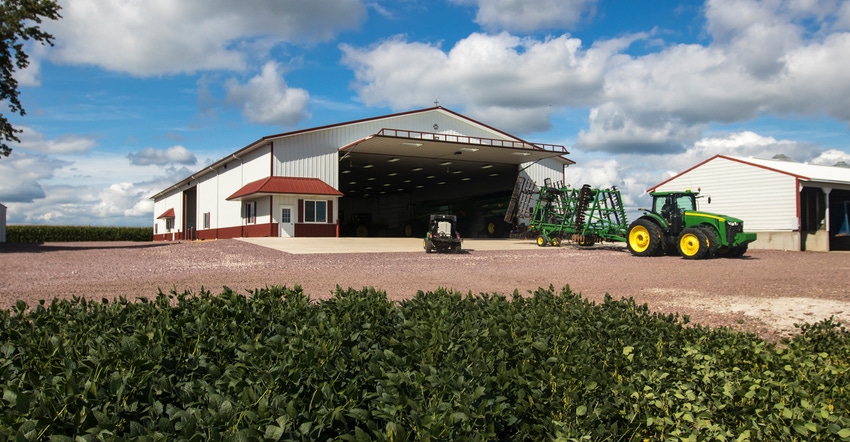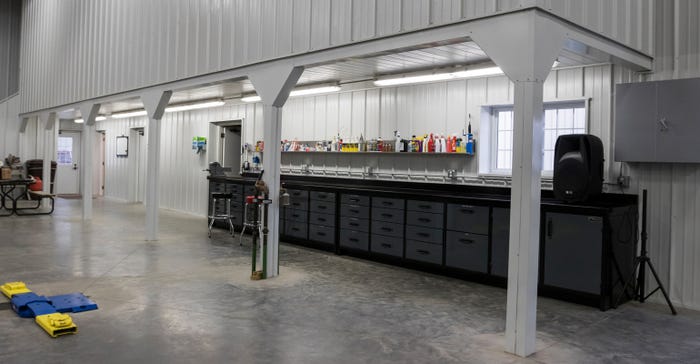
Building your next farm shop can take a lot of planning and consideration to get one that works best for your farm. Where do you start the process?
Scott Petterson, the construction center manager for Morton Buildings in Watertown, S.D., oversees construction for all types of farm buildings. The most important decision to start off your farm shop? Deciding where to build.
“The best starting point is site selection. Where they’re going to build, what the quality of the water table is, what utilities are available — that’s the best initial start,” he says.
Get more farm shop tips and insights: Build the best farm shop
Building orientation is just as important as location. Locating doors on the south side, ensuring that the new shop has a central location on the farm, and having running water can all help create the best headquarters for your farm.
How big to build?
While every farm’s needs are different, there are a few factors owners should consider in regards to shop size. “Typically, they’ll regret not building larger right away,” Petterson says. “The shops can be undersized within the first five to 10 years, so I recommend going a little larger than you think you need.”
Planning for future needs, not just current, will suit your farm better in the long run, especially with farm machinery continuing to get bigger. “Typical farm shops are 66 to 80 feet wide by 90 to 165 feet long and larger, with 17- to 20-foot door height to accommodate equipment. Each customer’s needs are unique,” he says.
Factor in space for tool and equipment storage, as well as all the pits, hoists, compressors and workbenches. And if a building needs to be enlarged later, it’s easier and cheaper to add to its length than its width.
 UTILIZE SPACE: Tucking workbenches or tools under raised storage areas maximizes a shop’s space.
UTILIZE SPACE: Tucking workbenches or tools under raised storage areas maximizes a shop’s space.

For interior rooms such as office, conference, and kitchen and bath spaces, storage can be planned above these areas, making for no wasted space. A workbench or tool storage area underneath stairs to these storage areas can also maximize the space.
Shop satisfaction
The most useful farm shops are the ones that cover each of your farm’s needs. The finishing touches may be the ones that make your farm shop work its best, such as placement of floor drains, light fixtures and acoustic panels to help with soundproofing.
“We have such a large number of features available. We should go through each customer’s situation on a case by case basis to customize to whatever the owner is looking to have built,” Petterson says.
As for choosing types of interior walls, that differs with each customer. “If they are washing equipment often, then a material such as PVC may be needed,” Petterson says. “If servicing equipment is the main function of the shop, then acoustical steel panels or three-quarter-inch tongue-and-groove on the bottom 8 feet of the walls may be the best alternative.”
Property owners may be worried about the current supply chain shortages or the build process once underway, but Petterson says Morton Buildings promises total satisfaction with designing and building a new farm shop.
Download our best farm shop ideas: Build the best farm shop
“We have fully integrated services, meaning that everything from the point of sale to the design and engineering to the finished product, they’re always working with a Morton representative,” he says. “From starting with a Morton sales consultant to Morton engineers and estimators, then it’s manufactured, delivered and installed from a Morton plant on a Morton truck, and then built by a Morton crew.”
Need some inspiration for your new farm shop? Check out the wide array of finished projects from Morton at mortonbuildings.com.
About the Author(s)
You May Also Like






